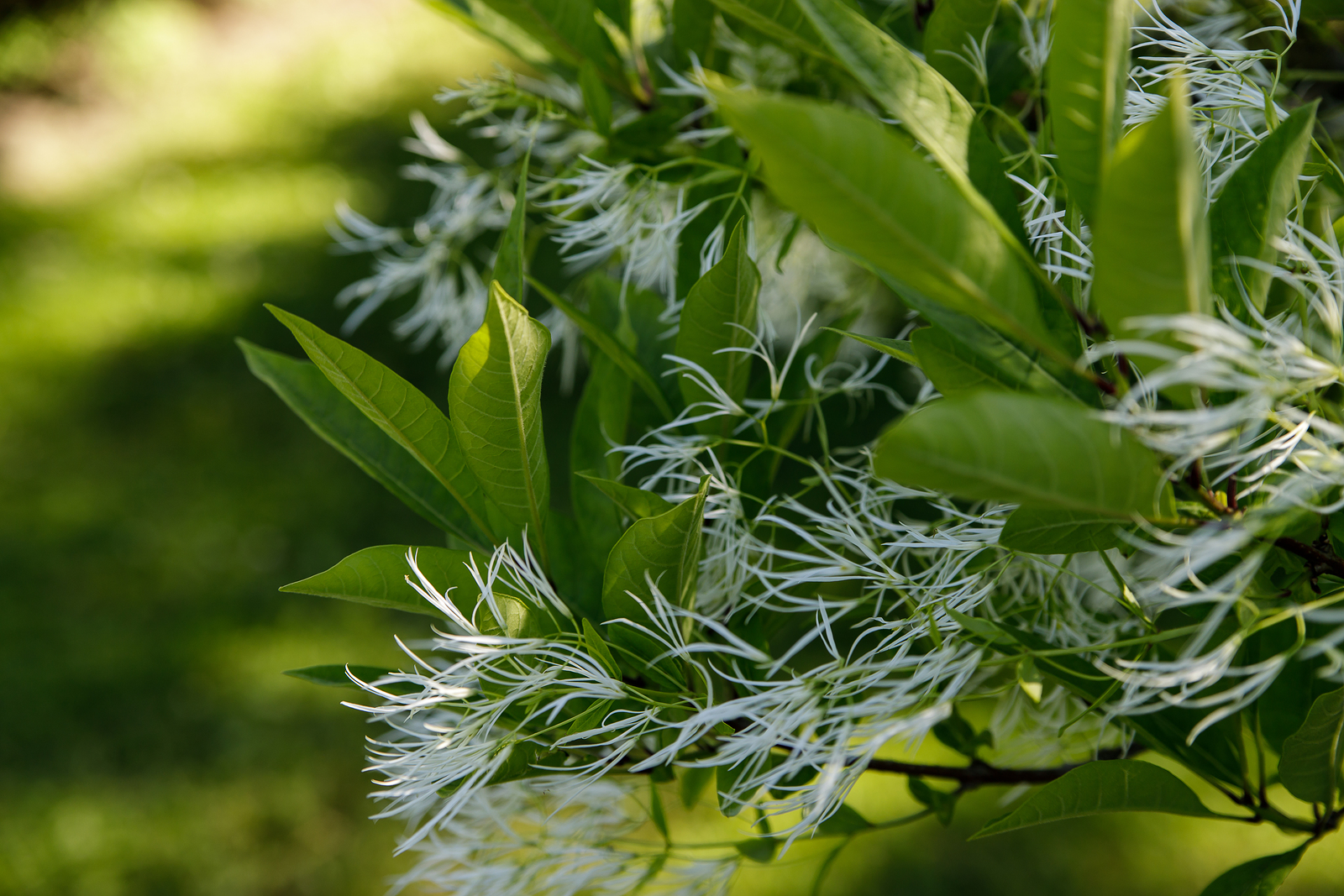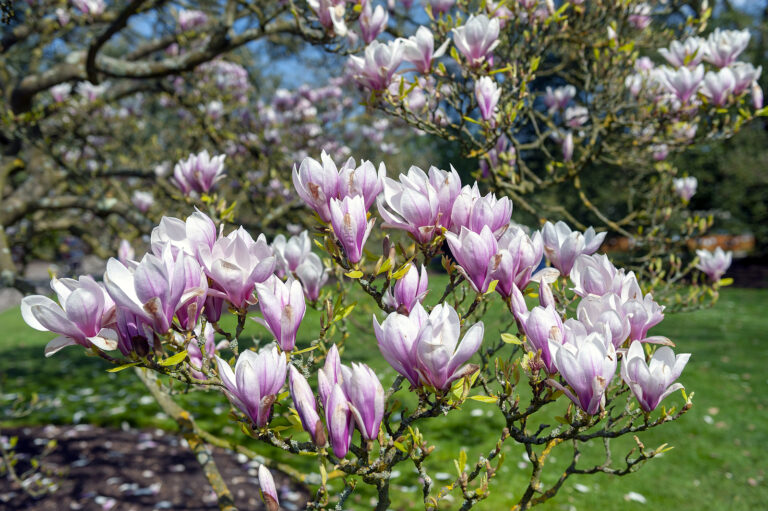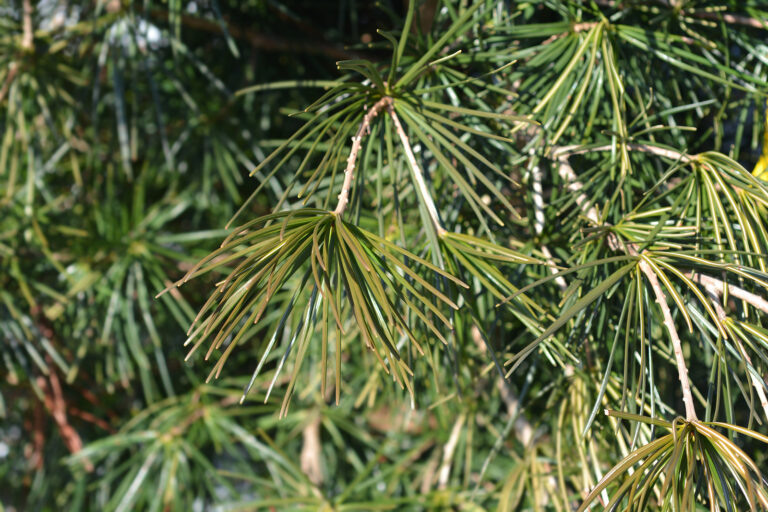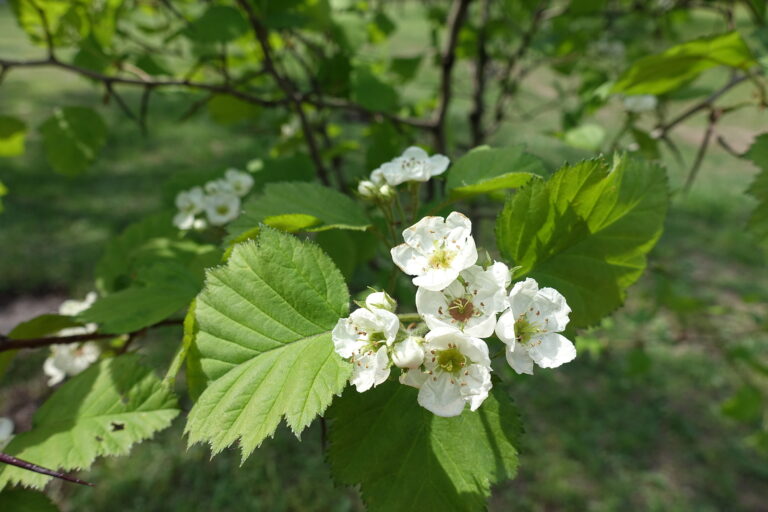How to Grow Fringe Tree – Chionanthus
Fringe tree, Chionanthus, is a deciduous small to mid-size tree or large shrub with medium green leaves that turn yellow in fall. Loose clusters of fragrant white flowers bloom from late spring into summer. Fringe tree is a slow grower.
Fringe tree is the common name for the genus Chionanthus, a member of the Olive Family. The genus is comprised of two species of trees or large shrubs with deciduous leaves and fluffy clusters of very small white flowers followed by a dark-blue olive-like fruit.
Fringe trees are hardy in cold-winter regions if given sheltered positions and winter protection. They should be planted in a warm sandy loam in an open sunny position and never allowed to suffer for lack of water.
Fringe trees are propagated by seeds sown in the fall or stratified, also by layers and cuttings, and occasionally they are grafted on ash, which belongs to the same family.
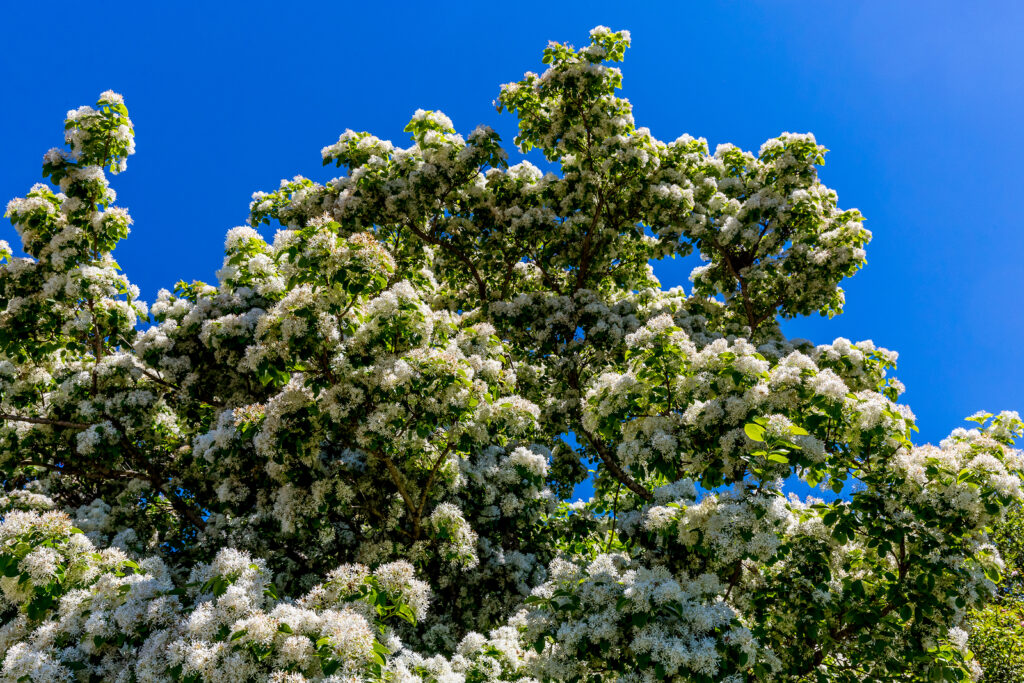
Get to know Fringe Tree
- Plant type: Deciduous flowering tree
- Growing Zones and range: Zones 5 to 8
- Hardiness: Grow best in cool regions
- Height and spread: 10 to 30 feet (3-9m) tall, 8 to 20 feet (2.4-6m) wide depending on the variety
- Foliage: Narrow-elliptic to ovate-oblong medium to dark green and waxy; leaves turn luminous yellow-gold in fall
- Flowers: Loose drooping clusters of fleecy white flowers followed by blue grape-like fruit on female plants; petals 6 to 8 inches (15-20cm) long
- Bloom time: Late spring into summer
- Uses: Specimen, small yards, seasonal accent, natural areas
- Common name: Fringe Tree
- Botanical name: Chionanthus spp.
- Family: Oleaceae
- Origin: Woodlands in China
Where to plant Fringe Tree
- Plant fringe tree in full sun or partial shade.
- Grow the fringe tree in humus-rich, well-drained soil. Acidic soil is optimal but alkaline soil is tolerable.
When to plant Fringe Tree
- Transplant balled-and-burlapped or container-grown plants in spring.
Planting and spacing Fringe Tree
- Space fringe trees to allow full size at maturity.
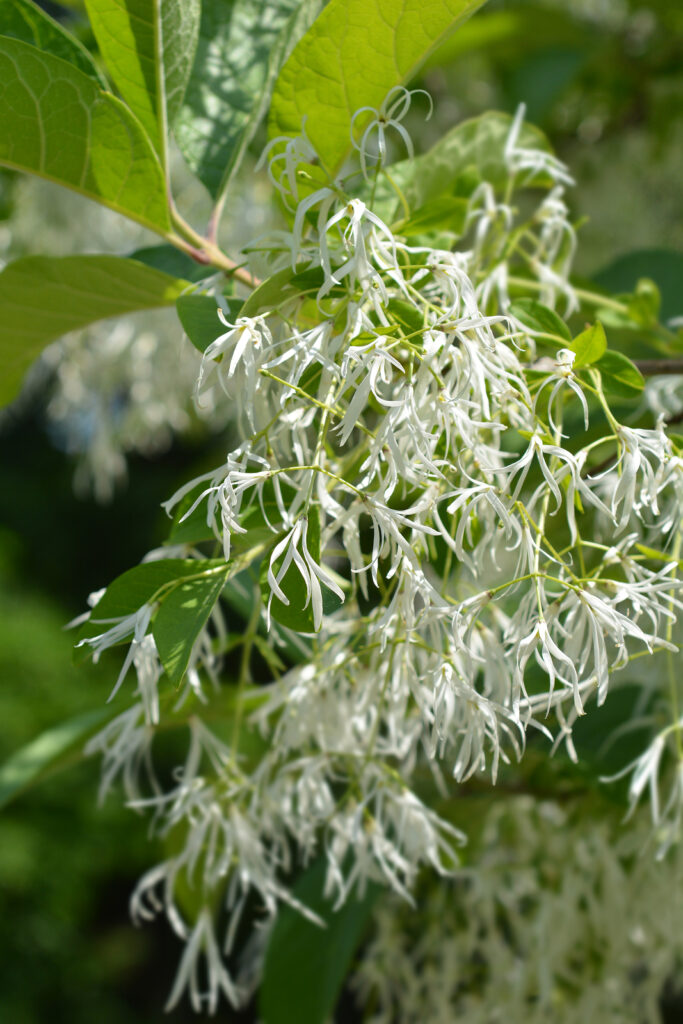
How to water and feed Fringe Tree
- Keep the soil evenly moist.
- Fertilize fringe tree by mulching around the tree with aged compost to the dripline.
Fringe Tree care
- To grow fringe flower as a small tree, prune away undesired stems in late winter or early spring.
- Flowers appear on new growth so prune immediately after flowering or in winter before new growth begins
Fringe Tree common problems
- The fringe tree is slow-growing.
- The fringe tree has no serious pests or diseases.
Fringe Tree propagation
- Sow seed in fall; seed may take 2 years to germinate.
- Take semi-hardwood cuttings in late summer.
Fringe Tree varieties to grow
- Chinese fringe tree, Chionanthus retusus: Zones 6-8; round form grows to 25 feet (7.6m) tall and 10 feet (3m) wide; usually multi-stemmed; fleecy panicles are snow white.
- White fringe tree, Chionanthus virginicus: Zones 5-8; slow-growing small tree or shrub to 30 feet (9.1m) tall; medium green leaves turn yellow in fall.

